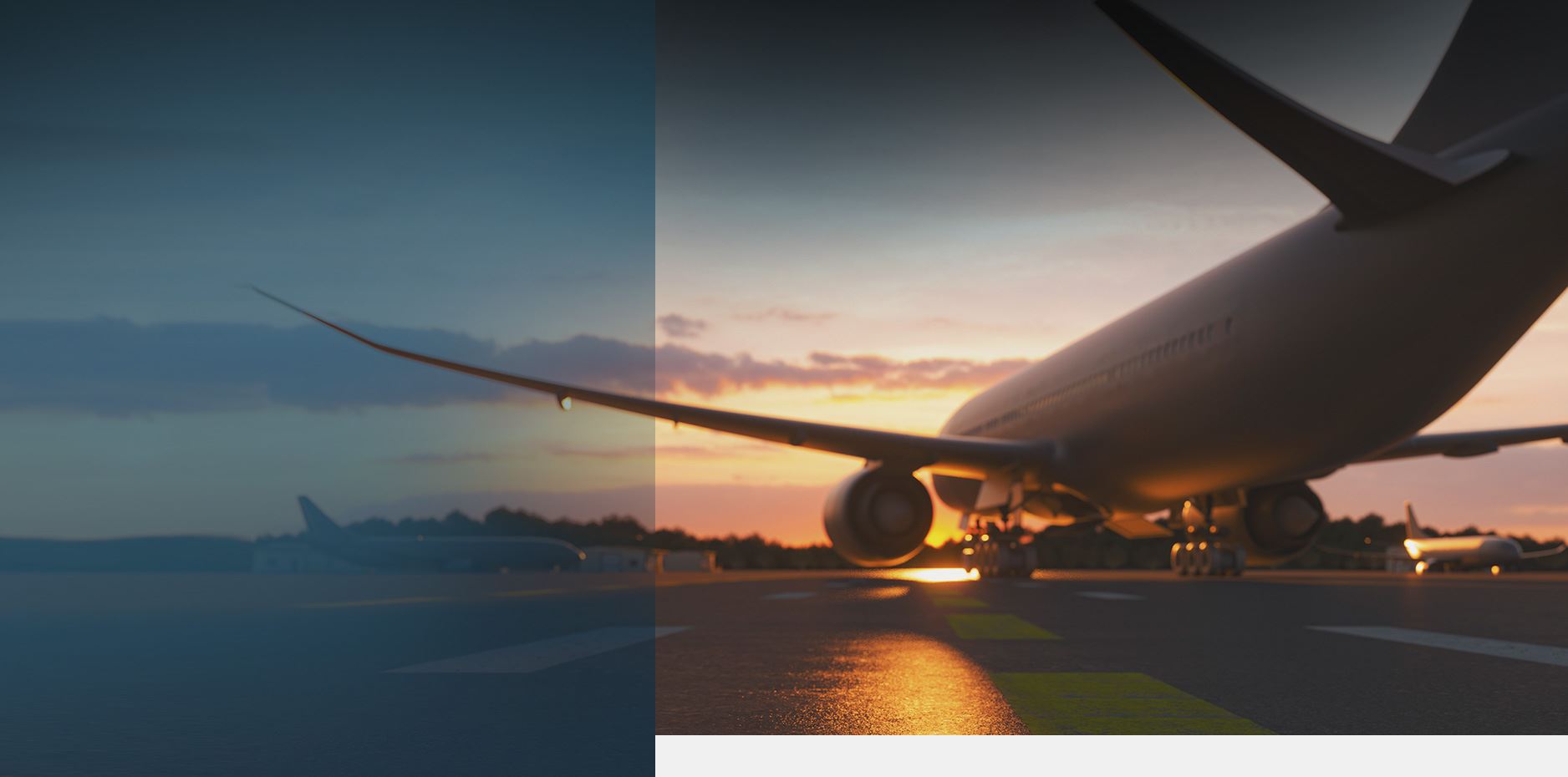
How the Montreal Convention Works in Air Crashes
The Montreal Convention governs the pursuit of compensation for personal injuries or wrongful death in an international aviation accident. If you or a loved one were harmed in an international plane crash, you need a skilled aviation accident attorney to analyze the circumstances of the incident to determine if the Montreal Convention applies.
A preeminent plaintiffs firm with a track record of success, Wisner Baum has extensive experience representing people from across the globe who were injured or lost loved ones in aviation accidents.
If you would like to learn more about our experience in international plane crash cases, contact us or call (855) 948-5098 to speak with an attorney.
What is the Montreal Convention?
The Convention for the Unification of Certain Rules for International Carriage by Air, commonly known as the Montreal Convention, is an international treaty that regulates and somewhat limits airline liability for injury, death, and lost or damaged baggage or cargo that occurs during international travel.
When an international airline flight crashes, the Montreal Convention addresses and determines the airline’s obligations, including passenger rights and compensation. The international treaty applies only to air carriers, not aircraft and parts manufacturers, the federal government or airport maintenance personnel.
The International Civil Aviation Organization (ICAO), a specialized agency of the United Nations that controls international travel, approved the Montreal Convention in 1999. The United States Senate ratified the treaty on Nov. 4, 2003. Today, the Montreal Convention includes more than 130 nation signatories.
Flights Governed by the Montreal Convention
In basic terms, the treaty applies to the international carriage of persons, baggage or cargo by aircraft. International carriage is defined as any flight between two countries who have ratified the Convention, or any domestic flight that also stops at a point in another foreign state.
The use of multiple carriers does not change the international nature of the flight, nor does a layover within a country. For example, if someone is travelling from Los Angeles, California to Jamaica with a layover in Orlando, Florida, all portions of the trip are subject to the Montreal Convention, including the domestic flight from Los Angeles to Orlando.
For any flight covered by the convention, an air carrier is liable for passenger injury or death from an accident on board, or during embarking or disembarking. Accident is broadly and flexibly defined. The U.S. Supreme Court has held that an accident is “an unexpected or unusual event or happening that is external to the passenger.” In fact, even acts of terrorism, hijacking and intentional assault are considered to be “accidents” under this definition.
The Warsaw Convention of 1929
As international air travel became a reality in the 1920s, the need for an appropriate global regime to govern air carriers led to the signing of the Warsaw Convention in 1929. The Convention unified an important sector of private aviation law.
The passing of time brought new technological and legal realities that necessitated changes to the original draft. The first came in 1955 at The Hague, Netherlands, and another came in 1971 in Guatemala City, Guatemala.
The Hague Protocol created a new and separate legal instrument that was only binding between the parties. For example, if one country was a party to the Warsaw Convention and another was a party to the Hague Protocol, neither had an instrument in common, which meant there was no mutual international ground for litigation.
Without consolidation, the undesirable result was confusion created by the concurrent operation of multiple instruments within the Warsaw Convention. The overwhelming need to modernize and consolidate all mechanisms of the Warsaw Convention into a single uniform text led to the Montreal Convention.
Changes from The Warsaw Convention to The Montreal Convention
The most significant change in the Montreal Convention is an increase in liability limits for injury or death. The Warsaw Convention and its related agreements limited personal injury liability to a relatively low amount unless a judge found “willful misconduct” by the airline.
The Montreal Convention establishes a two-tier approach to liability, based upon the significance of the damages.
- Regardless of fault in the accident, the air carrier is liable for personal injury or death damages up to 100,000 Special Drawing Rights (SDRs), which is currently about $140,000, unless the carrier can show that the claimant contributed in whole or part to the harm. The actual value varies depending on the currency exchange rate at any given time.
- For damages over 100,000 SDRs, the carrier will be liable without limit unless the carrier can prove that it was not negligent, or that a third party was solely responsible for the accident.
The Warsaw Convention did not provide for inflation. The Montreal Convention, which ties the value of damages to SDR units rather than simply setting a strict monetary cap, allows the available damages to rise with inflation.
In addition to changing the damages available, the Montreal Convention added a fifth venue choice for a passenger bringing a lawsuit for personal injury. Under the Warsaw Convention, injured people were limited to pursuing their legal claims in the courts of any state party to the Convention where:
- The carrier is domiciled.
- The carrier has its principal place of business.
- The carrier has a place of business and the travel contract was made.
- The air travel journey ended.
Now, under the Montreal Convention, an injured person can also bring a lawsuit in his or her place of permanent residence, as long as the air carrier has sufficient contact there as defined in the treaty. Again, this reflects a shift from an approach that benefits airlines to an approach that is friendlier to consumers.
The Montreal Convention: Better for Consumers, But Not Always Ideal
“The Montreal Convention is certainly an improvement over the Warsaw Convention for injured people, but the terms may still be less favorable than the general negligence laws of a particular jurisdiction,” says board certified trial attorney, Ronald L.M. Goldman.
For example, in some states, a person injured as the result of another’s negligence, could have up to four years to bring a claim. However, if the harm falls within the scope of the Montreal Convention, the injured person in that same state only has two years to bring the claim. Under the Montreal Convention, an injured person can only recover compensatory damage, not punitive damages. The Convention is the exclusive legal remedy. State or local laws pertaining to liability do not generally apply.
Call us today at (855) 948-5098 to speak with an attorney about your claim.
Our Case Results

-
$265 Million Settlement Fatal Train Crash
In 2016, Wisner Baum attorney Timothy A. Loranger and six other attorneys in the Plaintiffs’ Management Committee were able to secure a $265 million settlement for victims of the 2015 Amtrak 188 derailment in Philadelphia, one of the largest in the U.S. for 2016.
-
$3.5 Million Settlement Fatal Train Crash
Wisner Baum secured a $3.5 million settlement on behalf of an individual who died on a train.
-
$2 Million Settlement Fatal Train Crash
Wisner Baum obtained a $2 million settlement on behalf of a passenger who died on a train.
-
$2.8 Million Settlement Wrongful Death
Wisner Baum obtained a $2.8 million wrongful death settlement for a train passenger.

Client-Focused Representation
REVIEWS & TESTIMONIALS
We believe our track record speaks for itself. But you don’t have to take our word for it. See what our clients have to say about working with us.
-
"I Can’t Imagine a Better Law Firm"
Multiple lawyers recommended Wisner Baum to me and I have been consistently impressed with the quality of their work.
- Best Law Firms Survey -
"They Are About Changing the Systems..."
Wisner Baum are not only amazing attorneys but more importantly, they are activists. They are about changing the systems which got us into trouble in the first place. They understand their role in the process of making change.
- Kim Witczak -
"Top Legal Minds in the Country"
The Wisner Baum firm has some of the top legal minds in the country; they are driven, determined, trustworthy, ethical and passionate.
- From Best Lawyers® Best Law Firms





.2412301645015.png)